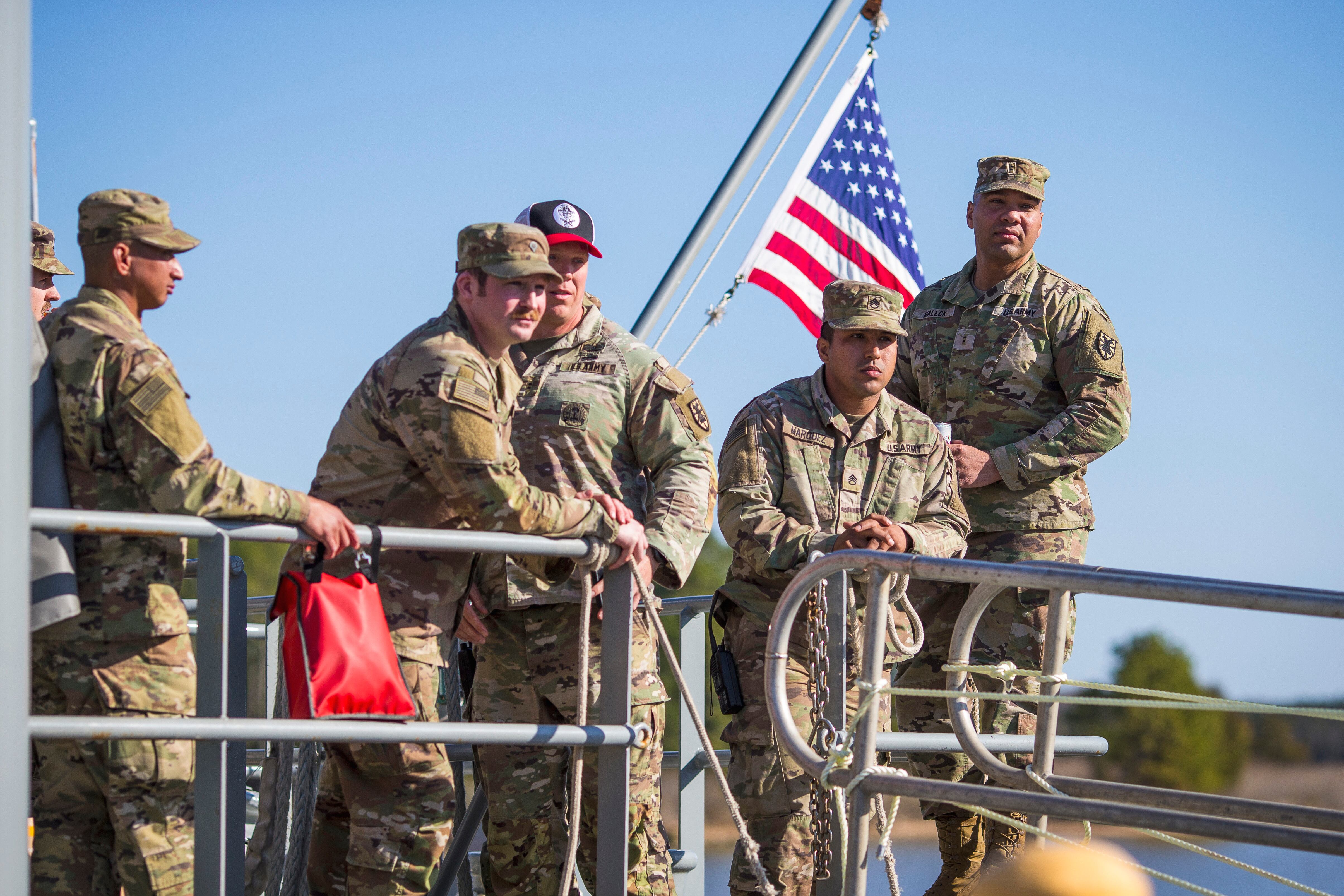As the U.S. military brings humanitarian assistance to Gaza, Army units perform key duties now and in the near term to deliver that aid.
A detachment of U.S. Army parachute riggers has worked around the clock since March 2 to build bundles of rations and water and pack the parachutes that guide the supplies to their landing spots in northern Gaza.
The aid is for Palestinians displaced by the ongoing Israel-Hamas War following brutal attacks that killed more than 1,200 and saw more than 250 kidnapped by Hamas militants on Oct. 7. Gaza’s Health Ministry says the Israeli offensive has killed at least 31,185 Palestinians.
Chief Warrant Officer 2 Michael Romeo, detachment commander of the 165th Quartermaster Company and Staff Sgt. Jacob Engstrom, the unit’s platoon sergeant, spoke with Army Times today as they prepared for their next load from an undisclosed location in U.S. Central Command.
The two soldiers are part of one of two teams in the region that are packaging the aid for air delivery. At their location, 18 soldiers have created a kind of assembly line system to load the bundles. At another undisclosed location, a separate group of six soldiers prepares bundles.
The bundles are loaded onto C-130s for air delivery over northern Gaza.
The team at Engstrom’s location prepares 88 bundles for each mission which runs on days alternating with the six-soldier team, he said.
Since March 2, the 18-soldier team has packaged 412 bundles for delivery. Jordan and others have assisted aid drops.
Among those bundles, 358 have been Meals Ready to Eat, counting for 206,208 meals. Another 54 bundles have contained bottled water, totaling 77,760 bottles of water.
MRE bundles weigh 1,250 pounds, a water bundle weighs 2,000 pounds, Engstrom said.
The staff sergeant said packing bundles such as this is identical to packing them to resupply troops, the only difference on this mission was the demand, which meant the crew had to set up an assembly line to put all the materials together more efficiently.
The soldiers are on standby whenever supplies are needed.
“It’s an honor to participate in this humanitarian aid effort, it’s given me an opportunity to show my intelligence on our parachutes and the things that we can produce as parachute riggers,” Engstrom said.
The riggers are using low cost, low velocity parachutes that have a descent rate of 28.5 feet per second or less, which ensures they’ll land safely, Engstrom said.
The airdrops commenced following an incident on Feb. 29 in Gaza in which Israeli troops fired on Palestinians rushing to an aid convoy, killing 115 and injuring more than 750, according to Gaza’s Hamas-run health ministry.
An Israeli Defense Forces investigation found most of the casualties were trampled in the incident. But the Associated Press quoted the head of the Gaza City hospital who said that casualties treated at the facility had gunshot wounds.
While airdrops continue apace, the Army has another vital role in humanitarian assistance to Gaza.

Five Army logistical support vessels are headed to the region, the Pentagon announced Tuesday, to build an offshore pier to open a maritime corridor to send humanitarian aid to the Gaza Strip.
As family members and senior Army commanders watched, about 70 soldiers with the 7th Transportation Brigade (Expeditionary) pulled away from the docks in four U.S. Army vessels: the USAV Wilson Wharf, USAV Matamoros and USAV Monterrey, all Army landing crafts, and the larger USAV SP4 James A. Loux, a logistics support watercraft.
The brigade’s commander, Army Col. Sam Miller, said about 500 of his soldiers will participate in the mission of a total of 1,000 soldiers.
“We expect the pier to be fully operational in approximately 60 days, which will be able to facilitate the delivery of up to 2 million meals daily,” Air Force Maj. Gen. Pat Ryder said in a Tuesday press briefing.
Miller said the transit will take about a month, but it will depend on weather and any possible high seas. The actual construction, he said, will take about a week, but that also could be hampered by weather. Then it will take additional time to get the delivery process coordinated with those providing the aid and the system up and running. Defense officials have said it will take about two months to get the deliveries started.
“The soldiers here are energized, they’re motivated, they’re excited,” Miller said, adding that the new humanitarian mission “gives them purpose and meaning” and highlights the Army’s watercraft.
A larger Maritime Sealift Command ship will also be leaving Virginia in the coming days, and will be carrying some of the bigger equipment and more of the steel pier segments.
The Army’s 7th Transportation Brigade, will use the Joint Logistics Over-The-Shore program to build a causeway off the Gaza coast, which will be anchored to the beach, Military Times reported.
Aid carried by cargo ships can then offload to an offshore platform. From the platform, troops will transfer aid items to smaller watercraft that will transport their load to the causeway. The aid will then be loaded onto trucks and driven into Gaza.
Those measures ensure U.S. troops will not have to physically set foot in the territory.
The last time the 7th Transportation Brigade did a similar mission to construct a large pier was in Haiti in 2010.
The Associated Press contributed to this article.
Todd South has written about crime, courts, government and the military for multiple publications since 2004 and was named a 2014 Pulitzer finalist for a co-written project on witness intimidation. Todd is a Marine veteran of the Iraq War.




